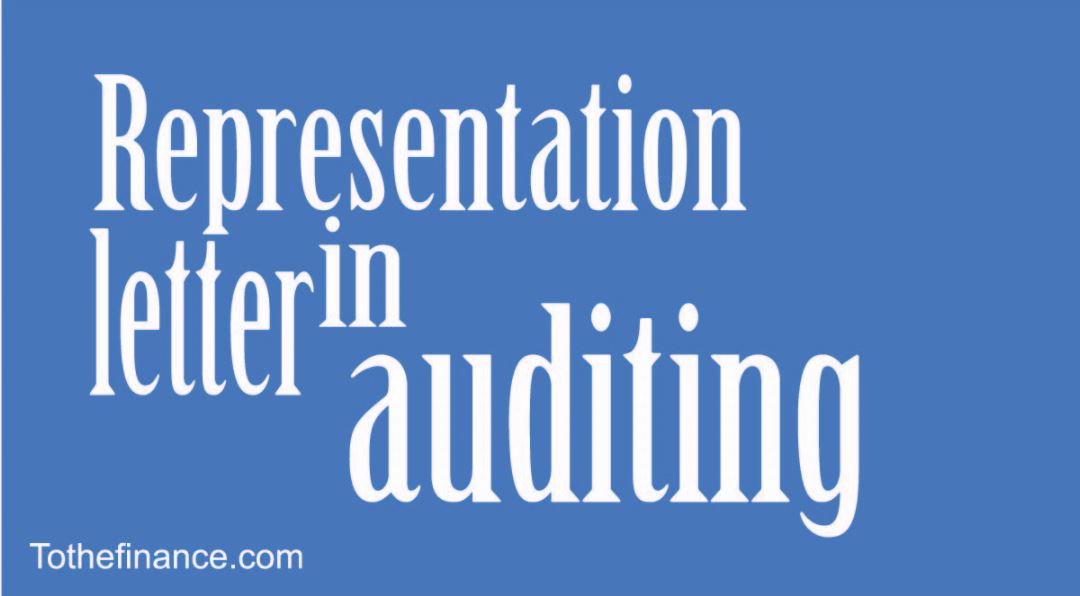Representation letter is used by auditor to get confirmation from audit client that they have been fair in providing all the relevant information/explanation to the auditor and they understand their responsibility.
The auditor issues a representation letter, and management or audit client needs to sign it. The content of the management representation letter is prepared by the auditor and signed by the higher management of the audit client.
Mainly, the following content is included in the letter.
- Confirmation of the information provided during the overall audit process.
Explanation
Auditors need to obtain multiple documents/supports from the audit client to issue an audit report. So, by issuing a representation letter, they seek confirmation from management/audit clients that the information provided to the auditors is genuine and does not include inaccurate/false information. Further, they have provided all the material financial/operational information to the auditor that is relevant to the audit.
So, representation letter’s content is designed to improve the auditor’s confidence to issue clean audit report.
It should be noted that through this letter, auditors get a confirmation for the facts related to technical/grey areas of the business activities/audit-related activities. For instance, they found some technical aspects in applying the reporting standard where management has claimed deferral due to their business sector. In this case, the auditor can include the following paragraph to get confirmation from management in their letter.
The application of the accounting standard XYZ is deferred for the next reporting period. The deferral is made under paragraph XYZ of the regulations. Kindly confirm this is in order.
The last words of the paragraph are home of sigh for the auditors. That’s because these words get confirmation from the higher management of the audit client.
- Confirmation of the responsibilities of the management.
Explanation
Auditors seek written confirmation from management about their responsibilities. For instance, this letter states that the financial statement’s preparation is the management’s responsibility. In other words, auditors are not responsible for preparing financial statement. However, they issue reasonable assurance reports.
So, a management letter is a type of insurance for the auditor as it transfers some of the responsibilities from the shoulder of the auditor to the management/audit clients.
There are so many questions that might come to your mind about a representation letter. For instance, at what time representation letter is prepared, what’s the importance of this letter, who is responsible for preparing this letter, which accounting standard requires the preparation of this letter, and what does it look like? Let’s explore related details for the same.
Also read, Steps to perform External audit.
At what time representation letter is prepared?
The management letter is prepared at the end when the audit is finalized. All the issues, from audit planning to report, are written in one place in the letter to ensure the auditor and management of the company are in one place.
What’s the importance of a management representation letter?
The management letter helps the auditor gain confidence on the audit’s overall issues. For instance, there might be some grey areas in auditing. So, they write all of these areas in one place in the management letter and get confirmation from the higher management of the audit client.
Who is responsible for issuing a written representation letter?
The auditors prepare this letter as this letter is for their relief, and they are in a better position to document all the technical/grey areas. However, once finalized, the letter is dispatched to the audit client’s higher management for review and signature.
It’s important to note that auditors do not sign an audit report if management has not given back a management/representation letter after the higher management’s signatures, (like the CEO and CFO of the company). Sometimes, this letter is also called a letter for representation. For higher management, we also use a term called those charged with governance.
Which auditing standard requires a representation letter?
ISA 580 provides guidance related to representation letter. In the scope section, this ISA states that the auditor is responsible for obtaining this letter from the company’s management. However, the signature can also be obtained from those charged with governance.
Conclusion
Auditors prepare a representation letter, and there are two main components. The first component is about the responsibility of the management and auditor. And the second component is about getting confirmation for the audit’s technical/operational/strategic aspects. As per ISA 580, the auditor is responsible for preparing written representation letter, and it’s signed by management/those charged with governance of the audit client. Further, it’s usually signed at the audit completion stage. However, if management does not sign the letter, the auditor needs to disclaim the audit.
Frequently asked questions
Can auditors use written representation as audit evidence?
The representation letter is not direct audit evidence. And it’s not sufficient and appropriate. However, it increases auditors’ confidence about specific audit matters as higher management has confirmed facts are in order.
Can auditors sign audit reports without getting a representation letter from management?
No, they are required to disclaim the audit if management does not sign a representation letter.
What if management does not sign a written representation letter?
As per ISA 580, the auditor is responsible for getting written representation from management. However, if management is not ready to sign the letter, auditors need to disclaim the audit.
